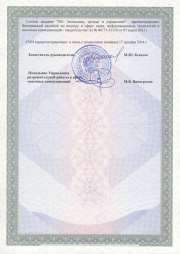|
MAIN PAGE
> Back to contents
Theoretical and Applied Economics
Reference:
Bekryashev A.
Adam Smith on uncertainty and security. Part 1.
// Theoretical and Applied Economics.
2023. № 4.
P. 73-86.
DOI: 10.25136/2409-8647.2023.4.69369 EDN: OMFUAT URL: https://en.nbpublish.com/library_read_article.php?id=69369
Adam Smith on uncertainty and security. Part 1.
Bekryashev Andrey
PhD in Economics
Associate professor, Department of Economic Theory and Financial Law, Omsk Academy of the Ministry of Internal Affairs of the Russian Federation
644092, Russia, Omsk region, Omsk, Komarova Ave., 7

|
klavdievitch@mail.ru
|
|
 |
Other publications by this author
|
|
|
DOI: 10.25136/2409-8647.2023.4.69369
EDN: OMFUAT
Received:
18-12-2023
Published:
31-12-2023
Abstract:
The subject of the article is the study of Adam Smith's conceptual ideas about uncertainty and security and their relationship. Methods of conceptual analysis are used in two versions. The presentist approach aims to interpret Smith's ideas about uncertainty in terms of modern concepts (fundamental and epistemological uncertainty and their forms). The antiquarian approach aims to explain the features of Smith's concepts in the context of the theological, philosophical ideas and methodological ideas he shared. The analysis is used in presentist and antiquarian variants. The first part of the article shows that Smith uses several concepts of uncertainty. One of them corresponds to the modern idea of epistemic uncertainty. Smith also develops an original concept of ambiguity, which, in the author's opinion, can be most constructively understood from the standpoint of a generalized version of Niels Bohr's principle of complementarity. However, in Smith's system this type of uncertainty is of fundamental importance and is associated with the feeling of sympathy. The third part of the article examines the influence of theological ideas on Smith's ideas about uncertainty. The peculiarities of scientists' interpretation of the uncertainty of the future are explored. The second part also examines selected conceptual relationships between uncertainty and security. In Smith's theoretical system, the reduction of uncertainty plays a special role in ensuring the long-term survival of society (ensuring security - in the presentist interpretation). Smith associates it with following the rules of the virtue of justice, which have the greatest certainty and, functioning like the rules of grammar, perform the function of creating order.
Keywords:
fundamental uncertainty, epistemological uncertainty, security, complementarity principle, classical economic theory, ambiguity, sympathy, system knowledge, contextual knowledge, ergodic
This article is automatically translated.
You can find original text of the article here.
His proposed approach creates the basis for generalizing the idea of complementarity beyond the particular problem of the appropriateness of applying the norms of abstract virtue and, thus, reflects an understanding of the depth and complexity of Smith's theoretical thinking. It is also important to note that in Smith's theoretical system, reducing this uncertainty plays a special role in ensuring the survival of society. Smith directly links the long-term survival of society with the pursuit of the virtue of justice. [2, pp. 101-103] The rules of this virtue are the most definite and are compared by Smith with the rules of grammar [2, pp. 176-177] in their function of forming order. The understanding of Smith's conceptual ideas about uncertainty can hardly be complete without taking into account the religious context of the great scientist's scientific activity. Its influence is supposed to be considered in the second part of the article.
References
1. Smith, А. (1962). An Inquiry into the Nature and Causes of the Wealth of Nations. Izdatelstvo socialno-ekonomicheskoj literatury.
2. Smith, А. (1962). The Theory of Moral Sentiments. Мoscow: Respublika.
3. Smith, A. (1982). Essays on philosophical subjects. Indianapolis: Liberty Fund.
4. Viner, J. (1991). Essays on the Intellectual History of Economics. Princeton: Princeton University Press.
5. Winch, D. (1996). Riches and Poverty: An Intellectual History of Political Economy in Britain, 1750-1834. New York: Cambridge University Press.
6. Winch, D. (1978). Adam Smith’s Politics: An Essay in Historiographic Revision. Cambridge: Cambridge University Press.
7. Haakonssen, K. (1981). The Science of the Legislator. Cambridge: Cambridge University Press.
8. Fleischacker, S. (2004). On Adam Smith’s “Wealth of Nations”: A Philosophical Companion. Princeton: Princeton University Press.
9. Rothschild, E. (1996). The Debate on Economic and Social Security in the Late Eighteenth Century: Lessons of a Road Not Taken. Development and Change, 2(2), 331–351.
10. Persky, J. (1989). Adam Smith’s Invisible Hands. Econ. Perspectives, 3, 195–201.
11. Grampp, W.D. (2000). What Did Smith Mean by the Invisible Hand? Journal of Political Economy, 108(3), 441–465. doi:10.1086/262125
12. Ослингтон, П. (2015). Бог и рынок: "невидимая рука" Адама Смита. Христианское чтение, 1, 181–206.
13. Harrison, P. (2011). Adam Smith and the History of the Invisible Hand. Journal of the History of Ideas, 72(1), 29–49. doi:10.1353/jhi.2011.a413473
14. Clark, Ch. (1992). Economic Theory and Natural Philosophy. The Search for the Natural Laws of the Economy. Jamaica, New York: Edward Elgar.
15. Newton, I. (2004). Isaac Newton: Philosophical Writings. Cambridge: Cambridge University Press. doi:10.1017/CBO9780511809293
16. Knight, F. (2003). Risk, Uncertainty, and Profit. Delo.
17. Keynes, J. М. (1993). Selected works. Ekonomika.
18. Keynes, J. М. General theory of employment. In Istoki. Issue 3. Izdatelskij dom Gos. Un-ta – Vysshej shkoly ekonomiki, 2001.
19. Dequech, D. (2000). Fundamental Uncertainty and Ambiguity. Eastern Economic Journal, 26(1), 41–60.
20. Davidson, P. (1996). Reality and Economic Theory. Journal of Post Keynesian Economics, 18(4), 491–492. doi:10.2307/4538504
21. North, D. (2010). Understanding the Process of Economic Change. Izdatelskij dom Gos. Universiteta – Vysshej shkoly ekonomiki.
22. Blaug, М. (1994). Economic theory in retrospect. Delo Ltd.
23. Best, J. (2005). The limits of transparency. Ithaca and London. Cornell University Press.
24. Rozov, М.А. (2008). The theory of social relay races and problems of epistemology. Novyj hronograf.
25. Lawson, T. (1997). Economics and Reality. London: Routledge.
26. Dow, S.C.&Chick, V. (2012). The Meaning of Open Systems. In Foundations for New Economic Thinking (178–196). London: Palgrave Macmillan. doi:10.1057/9781137000729_11
27. Bohr, N. (1971). Selected scientific works, 2. Nauka.
28. Rozov, М.А. (1994). Presentism and antiquarianism – two pictures of history. Voprosy istorii estestvoznaniya i tekhniki, 3, 13–26.
29. Blaug, М. (2004). The Methodology of Economics, or How Economists Explain. NP «ZHurnal Voprosy ekonomiki».
30. Schabas, M. (2005). The Natural Origins of Economics. Chicago and London: University of Chicago Press.
31. Samuelson, P. (1968). What Classical and Neoclassical Monetary Theory Really Was. The Canadian Journal of Economics, 1(1), 1–15. doi:10.2307/133458
32. Spengler, J. (1975). Adam Smith and Society’s Decision-makers. In Andrew S. Skinner, Thomas Wilson (Eds), Essays on Adam Smith (237–246). Oxford: Clarendon Press.
33. Bloom, N. (2014). Fluctuations in Uncertainty. Journal of economic perspectives, 28(2), 153-176. doi:10.1257/jep.28.2.153
34. Smith, A. (1977). An Inquiry into the Nature and Causes of the Wealth of Nations. Chicago: University Of Chicago Press.
35. Davidson, P. (1991). Is Probability Theory Relevant for Uncertainty? A Post Keynesian Perspective. The Journal of Economic Perspectives, 5(1), 129–143.doi:10.1257/jep.5.1.129
36. Rozmainskij (2007). Monetary economics as the main “objective world” of post-Keynesian theory. Ekonomicheskij vestnik Rostovskogo gosudarstvennogo universiteta, 5(3), 58–68.
37. Rozov, М.А. (2009). Engineering design in scientific knowledge. In V.A. Lektorskij (Ed.), Constructivist approach in epistemology and human science (54–67). Kanon-plyus.
38. Pauli, В. (1947). General principles of wave mechanics. М. – L.: ОGIZ.
39. Gendlin, E.T. (1991). Thinking beyond patterns: body, language and situations. In B. den Ouden & M. Moen (Eds.), The presence of feeling in thought (25-151). New York: Peter Lang.
Peer Review
Peer reviewers' evaluations remain confidential and are not disclosed to the public. Only external reviews, authorized for publication by the article's author(s), are made public. Typically, these final reviews are conducted after the manuscript's revision. Adhering to our double-blind review policy, the reviewer's identity is kept confidential.
The list of publisher reviewers can be found here.
The reviewed article is devoted to the study of Adam Smith's methodological ideas and creative legacy on uncertainty, which the classic considered in relation to security. The research methodology is based on the study of primary sources, generalization of materials from scientific publications on the issues under consideration. The authors rightly attribute the relevance of the work to the fact that uncertainty today is increasingly beginning to be considered as a factor influencing the parameters of the economic system that are critical to security and, above all, the economic security of its various subsystems, and the study of Adam Smith's conceptual ideas about uncertainty and its relationship to security is relevant both from a cognitive point of view to deepen the understanding of his contribution to the development of economic thought, and to find practical ways to ensure economic security. The scientific novelty of the reviewed research consists in a systematic presentation of A. Smith's views on the uncertainty and safety of the functioning of socio-economic systems, analysis and interpretation of the views of the classic, taking into account historical events over the past two and a half hundred years. Structurally, the article highlights the following sections: "Relevance", "Literature", "Classical Economists, Adam Smith and uncertainty", "Uncertainty: a contextual approach", "Uncertainty: a conceptual approach", which includes the following four subsections: "Literature on types and forms of uncertainty", "Smith: concepts of uncertainty. The Presentist approach", "Uncertainty and the principle of complementarity", "Knud Haakonssen's Concept of systemic and contextual knowledge, complementarity and uncertainty", as well as "Bibliography". The publication reflects Adam Smith's main ideas about uncertainty and security, set out in his works "Research on the causes of the wealth of nations", "Theory of moral Feelings", "History of Astronomy", as well as summarizes the works of scientists devoted to the study of Smith's social, ethical ideas, his contribution to the development of scientific knowledge. The bibliographic list includes 39 sources – scientific publications of foreign and domestic authors on the topic under consideration, published during the period from 1962 to 2009. The text contains targeted references to bibliographic sources, which confirms the existence of an appeal to opponents. Of the shortcomings that need to be eliminated, the following should be noted: the article does not end with conclusions or a conclusion – without this, it has an incomplete appearance. Despite the fact that it presents only the first part of the study, the results of it should still be summarized, since when they are placed in the second part of the planned publication, the reader will see only the final half of it, and the conclusions drawn from the work as a whole will be incomprehensible to him. The reviewed material corresponds to the direction of the journal "Theoretical and Applied Economics", reflects the results of the work carried out by the authors, contains elements of scientific novelty and practical significance, may arouse interest among readers, and is recommended for publication taking into account the comments made.
Link to this article
You can simply select and copy link from below text field.
|
|





